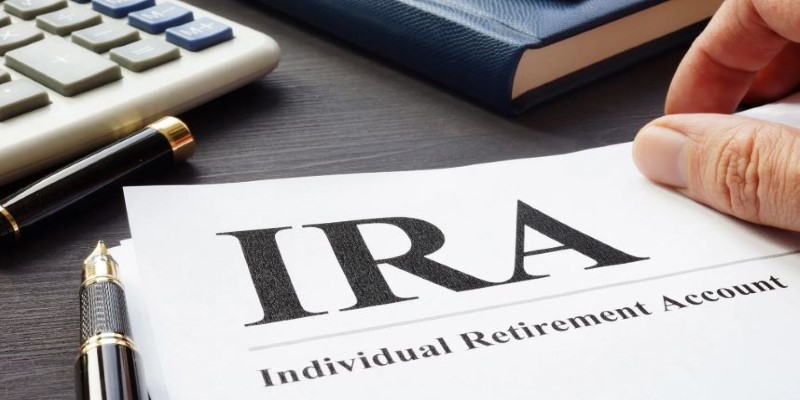Managing retirement savings comes with decisions that can significantly impact your future. When moving funds between retirement accounts, it’s crucial to avoid unnecessary taxes and penalties. One of the safest ways to transfer funds is through a direct IRA transfer. This method ensures that money moves between accounts without triggering tax liability or requiring extra reporting to the IRS.
Unlike indirect rollovers, which involve handling funds personally, direct transfers provide a seamless transition while maintaining tax-deferred status. Understanding how direct IRA transfers work facilitates informed financial decisions and preserves retirement savings.
What Is a Direct IRA Transfer?
A direct transfer of an IRA is a process by which money is transferred from one IRA to another without the account holder having possession of the funds. Instead, the funds are transferred by the financial institutions involved so that the transfer remains tax-free. This method is commonly used when switching IRA custodians or consolidating multiple retirement accounts. Since the money never enters the account holder's hands, there is no risk of accidentally triggering a taxable event.
Unlike indirect rollovers, which involve the account holder taking funds out and redepositing them within 60 days, direct transfers eliminate the need for personal intervention. This avoids possible IRS penalties and tax issues that may occur if deadlines are not met, making it a smoother, more hassle-free process. Direct IRA transfers also do not tally under the one-rollover-per-year rule, and account holders can roll over several times without restriction or fear of unanticipated limits.
How the Process Works?
A direct transfer from an IRA begins with the selection of the financial institution that will be the recipient and with having an IRA account open if not already established. The present custodian of an IRA is then called on to implement the transfer. This is usually done by filling out a transfer request form with information regarding the receiving institution, such as account numbers and provider details. The present custodian executes the request and transfers the funds directly to the new IRA provider, either electronically or by check made out to the institution and not the account owner. Since the account owner never actually touches the funds, the transfer is tax-free.

The timeline for a direct IRA transfer varies based on the custodians involved. While some transfers are completed in a few days, others may take a few weeks, especially if additional paperwork or verification is required. Some financial institutions impose fees or specific requirements, so it’s important to clarify the process with both providers beforehand. Following up on the transfer ensures that funds are moved correctly and without unnecessary delays. Once the transfer is completed, the new IRA account continues to grow on a tax-deferred basis, just as it did in the original account.
Benefits of Choosing a Direct IRA Transfer
Opting for a direct IRA transfer offers multiple advantages over other transfer methods. The most significant benefit is avoiding unnecessary taxes and penalties. Because the account holder never touches the money, there is no risk of it being classified as a withdrawal, which could trigger income tax or early withdrawal penalties.
Another advantage is the ability to make unlimited direct transfers between IRAs. Unlike indirect rollovers, which can only be done once per year per account holder, direct transfers have no such limit. This allows for greater flexibility when managing retirement savings, whether consolidating accounts, switching providers, or moving funds into a better investment option.
Direct transfers also eliminate the stress of meeting IRS deadlines. With indirect rollovers, funds must be redeposited within 60 days to avoid tax consequences. If the deadline is missed, the entire amount becomes taxable, and additional penalties may apply if the account holder is under the age of 59½. A direct transfer removes this risk, providing a worry-free way to move funds between retirement accounts.
Additionally, this method ensures continuity in tax-deferred growth. Since the transfer is not considered a taxable event, the account balance continues to accumulate without interruption. This allows for better long-term financial planning and helps maximize retirement savings over time.
Common Mistakes to Avoid with Direct IRA Transfers
While direct IRA transfers are a safe and efficient way to move retirement funds, mistakes can still happen. One common error is providing incorrect information on transfer request forms. Even a small mistake, such as an incorrect account number, can delay the process or result in funds being sent to the wrong account. Double-checking all details before submitting the request can prevent unnecessary complications.

Another mistake is assuming that all financial institutions process transfers the same way. Some custodians may require additional paperwork, while others may impose fees for outgoing transfers. It's always best to contact both the current and new IRA providers to understand the specific requirements and costs involved.
A less obvious but equally important mistake is failing to track the transfer progress. While most transfers go smoothly, delays can happen, and some funds may take longer to be processed. Following up with both institutions ensures that the transfer is completed correctly and within a reasonable timeframe.
Avoiding these common pitfalls helps ensure a direct IRA transfer is completed efficiently, keeping retirement savings intact and tax-deferred.
Conclusion
A direct IRA transfer is the safest and most efficient way to move funds between retirement accounts. By allowing financial institutions to handle the transfer, account holders can avoid tax complications, IRS penalties, and unnecessary stress. Unlike indirect rollovers, direct transfers do not impose time-sensitive restrictions or annual limits, making them a preferred option for managing IRA funds. Whether consolidating accounts or changing custodians, using a direct transfer ensures that retirement savings remain intact and continue growing tax-deferred. Taking the right approach to transferring IRA funds helps secure a stable financial future while simplifying the process of managing retirement assets.












